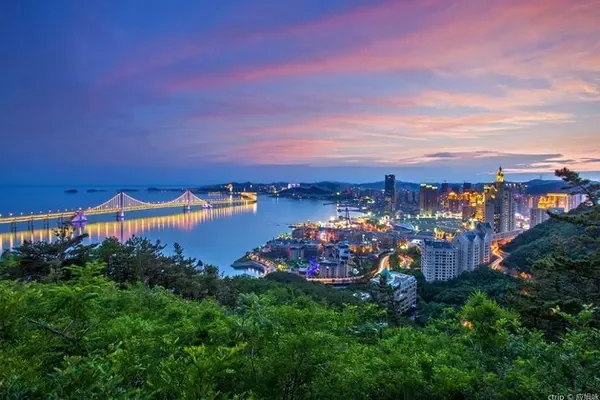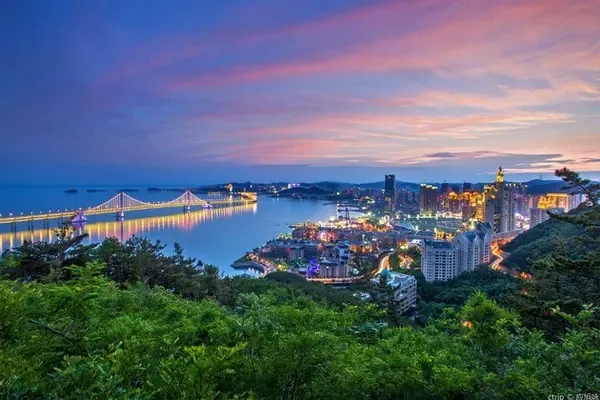China is so big, I want to visit it. Take you to a place you have been or have not been to.
Coming to this "world's most perfect ruin" is like arriving at an archaeological site
The ancient city of Jiaohe is the ancient city of Yaergole. Yaergoole is a Turkic transliteration, meaning "cliff" and "river bank". The ancient city is located in Yaernaizgou Village, 10 kilometers west of Turpan City. It is an island-shaped platform with a length of 1,700 meters and a width of 300 meters. Because the river flows around the city, it is called Jiaohe.


Looking down from the air, the old city looks like a leaf, more like an unsinkable giant ship, and the two rivers that surround the city are natural moats. More than 2,000 years ago, it was the seat of the royal court of "Cheshiqian Kingdom", one of the 36 ancient Western Regions.

It is said to be a "city" but there is no city wall. Due to the rush of the river, the three sides of the platform face cliffs with a height of tens of meters. The capital of Cheshiqian Kingdom was built here. The dry and rainless climate of the Turpan Basin has miraculously preserved the main structure of Jiaohe Ancient City, making it the oldest, largest, and best-preserved adobe city in the world, as well as the most complete urban relic preserved in my country for more than 2,000 years.


From the 2nd century BC to the 5th century BC, the Cheshi people who lived here used unimaginable wisdom to dig down from the original soil on this platform, cut the original soil to leave four walls, and then took out the original soil to form cave dwellings. In some underground houses, even wood is rarely used. The excavated raw soil was rammed into the wall of the above-ground part by the slab construction method (that is, "dry beating"), forming two parts above and below the ground, which means that this ancient capital was "dug out".


This method of "reducing the land to build houses, ramming the earth for walls, and digging up the earth to make roads" is unique and unique at home and abroad. In the past 2,000 years, one nation after another, one group after another group of people from several major races, according to their own civilization style and understanding of "city", kept digging, sculpting, and finally polished the deal The complete layout of the river city.


Jiaohe Ancient City is vividly called "the carved city". Half of the building is underground and the other half is on the ground. Is it to defend against foreign aggression? Or to resist the scorching heat of summer? It also left us with a mystery through the ages.


The geographical location of Jiaohe City is very important. No matter in terms of military affairs or the trade linked by the Silk Road, whether it is the nomads in the north or the dynasty of the Central Plains, Jiaohe City is a place that must be contested. During the long 1600 years, Jiaohe City had a war almost every two or three years, and a war every ten years or so. This historic city has been active on the stage of Chinese history for at least 1500 years. During this period, different dynasties had different jurisdictions over it. It has always been the political, economic, military, and cultural center of the ancient Western Regions, and a hub for the fusion of Eastern and Western cultures. There are more than 10 names recorded in the history books: Cheshi, Xiongnu, Hujie, Xianbei, Rouran, Gaoche, Turkic, Tubo, Uighur, Mongolia... How many ethnic groups have multiplied and lived in the Western Regions? It is hard to tell, and the ins and outs of many ethnic groups are still a mystery.


Before BC, the Han Dynasty and the Xiongnu fought over Jiaohe for half a century, and finally the Han Dynasty gained a firm foothold in the Turpan area. In 67 BC, the army of the Han Dynasty garrisoned Cheshi, and 7 years later established the Duhufu in Jiaohe City to implement the management of the countries in the Western Regions. Since then, the entire Western Regions have been included in the Chinese territory.

During the Southern and Northern Dynasties in 450 A.D., Cheshiqian Kingdom was annexed by Gaochang Kingdom. In the 14th year of Tang Zhenguan (640), Tang Dynasty destroyed Gaochang Kingdom. The highest military and political institution in the Western Regions of Tang Dynasty——Anxi Duhufu was originally established in Jiaohe City. In 840, the Gaochang Uighur Kingdom was established, and Jiaohe City became one of the important military towns under the kingdom. Due to the limited development of the small area, Jiaohe City is also gradually declining. From the end of the 8th century to the middle of the 9th century, Gaochang was occupied by Tubo. At the end of the 13th century, the city was destroyed by the fire of Mongolian cavalry. At the end of Yuan Dynasty and the beginning of Ming Dynasty, Jiaohe City finally finished its life course and became ruins. Jiaohe City was built to meet the needs of the war, but it was eventually destroyed by the war. The war promoted the integration of various ethnic groups in the Western Regions, accelerated the evolution of civilization, and at the same time destroyed ancient civilizations, such as the Buddhist civilization in Gaochang.

"The Great Wall is still there today, but Qin Shihuang was not seen back then." According to archaeological excavations, the old city is composed of buildings such as temples, government offices, towers, dwellings and workshops. A north-south avenue about 350 meters long and 10 meters wide divides the city into two parts, east and west. Except for a few management institutions, almost 90% of the buildings are enclosed within tall and thick walls. Looking around the earthen walls on both sides of the road, all buildings along the street do not have doors and windows. Only by going around the alley can one enter the house, which is undoubtedly a need for defense.
Ruins of Jiaohe City Official Office

As a defensive city, Jiaohe City is very similar to Chang'an City at that time. On both sides of the road are tall and thick earthen walls, and behind the earthen walls are "squares" divided by criss-crossing alleys, which are the relics of the system in the squares. The fangli system of the Tang Dynasty divided the whole city into different fangs through orderly streets. Each fang had a door, which was opened in the morning and closed at night, and random traffic was prohibited at night. Houses in the city are not allowed to open their doors facing the street, no doubt out of public security considerations. Archeology also found remains of handicraft workshops such as weaving, wine making, and shoemaking.
The Jiaohe Ancient City we see now is a native city that has been excavated by archaeology. You have to listen to the tour guide's explanation and combine the prompts to understand it more or less. The word "most beautiful" is popular at the moment, and this ruined city is also known as "the most perfect ruin in the world".
Finally, we went to Yarnaizgou Village to see the old houses of the Uighurs.


The thick raw earth walls can resist the scorching heat, and the flowers, trees and trellises are conducive to shade and cooling.

Gaochang was originally the capital of Buddhism, but was forced to convert to Islam, and its architecture is already in Islamic style.

The owner of this yard was originally Bayi (equivalent to a landlord and a rich peasant), and it has a courtyard-style layout of a detached house. You can take a photo with Lord Bai and Uighur beauties.





